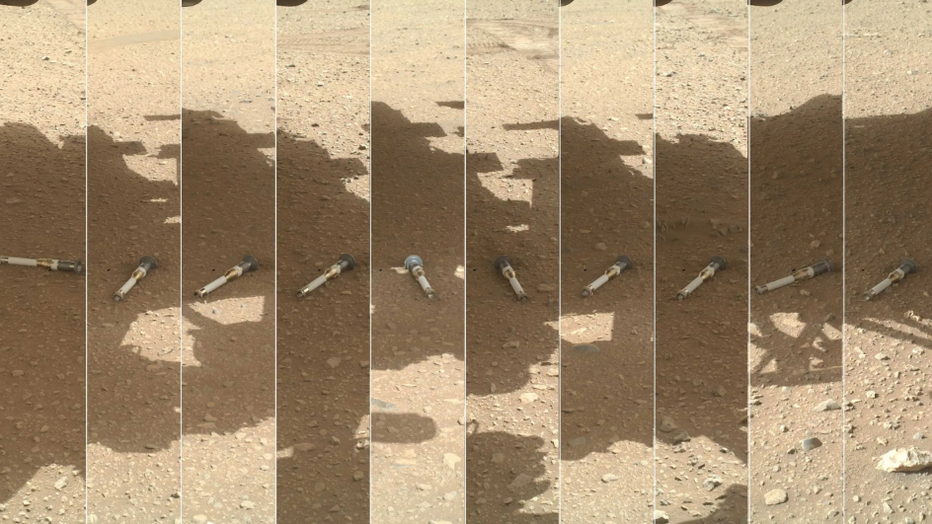NASA announces new approach to Mars Sample Return Program during news conference Tuesday

NASA seeks ideas for Mars sample return mission
NASA is rethinking how to bring samples from Mars back to Earth after a review found that current budget constraints would delay the Mars sample return mission to 2040 and cost more than $11 billion.
ORLANDO, Fla. - NASA announced their new approach to their Mars Sample Return Program on Tuesday. The agency will develop two landing architectures in parallel, promoting competition and innovation while aiming for cost and schedule efficiency.
NASA is projected to select one of the plans for the program in the second half of 2026. They aim to better understand the mysteries of the universe and determine if the Red Planet ever was a host to life.

This photomontage shows tubes containing samples from Mars, as collected by NASA’s Perseverance Mars rover. The agency’s Mars Sample Return Program plans to bring these samples back to study them in state-of-the-art facilities on Earth. CREDIT: NASA/
"Pursuing two potential paths forward will ensure that NASA is able bring these samples back from Mars with significant cost and schedule saving compared to the previous plan," said NASA Administrator Bill Nelson. "These samples have the potential to change the way we understand Mars, our universe, and – ultimately – ourselves. I’d like to thank the team at NASA and the strategic review team, led by Dr. Maria Zuber, for their work."
In September 2024, NASA accepted 11 studies from the NASA community and industry on the best approach for returning Martian samples to Earth. A Mars Sample Return Strategic Review team will assess these studies and recommend a primary architecture for the campaign, including cost and schedule estimates.
Related article: NASA’s Curiosity rover makes shocking discovery on Mars: 'It shouldn’t be there'
Two options:
As part of the formulation process, NASA will explore and evaluate two methods for landing the payload platform on Mars.
Option one: Will use the sky crane method, which was demonstrated during the Curiosity and Perseverance missions.
Option two: Will utilize new commercial capabilities to deliver the lander payload to Mars.
Both options will feature a smaller version of the Mars Ascent Vehicle on the landed platform.
The payload platform:
The platform will use a radioisotope power system instead of solar panels, providing power and heat during Mars' dust storm season, which simplifies the mission's design.
Related article:
The sample container & sample loading system:
The orbiting sample container will carry 30 sample tubes collected by the Perseverance rover.
A redesigned sample loading system will place the samples into the container while minimizing dust accumulation, which reduces the complexity of planetary protection measures.
Both mission options depend on the Earth Return Orbiter, operated by the European Space Agency (ESA), to capture the orbiting sample container in Mars' orbit.
ESA is reviewing NASA's plan.
For more information on NASA's exploration of Mars: Click here
The Source: The information in this article comes from NASA's website and their most recent press release.

